Dog tags were first used by the US during the Civil War as a method of identifying fallen soldiers.
This practice continued throughout World War I, World War II, and until today, so if you know someone who enlisted in the armed forces, they probably had one of these tags.
Although there’s no site or database that lists dog tag information, to know what’s on them, you can request your loved ones’ military records through the National Personnel Records Center as their next of kin.
Another option is to use the veteran’s service number or social security number as a point of research.
We’ll discuss how to look up military dog tags in detail below.
Table of Contents
Steps to Look Up Military Dog Tags
1. Know what’s on a dog tag.
To conduct a dog tag lookup, you should know the soldier’s social security number and name. These will come in handy while searching for his or her military records.
As for why we need military records, the info on the identification tag often comes from these documents themselves. By acquiring them, you’ll be able to determine what’s on your father’s dog tag or that of another loved one.
But first, familiarize yourself with the structure of this item, especially if you plan to make a replica of it as a memento.
Tip: In case you still have a somewhat legible dog tag, write down its Social Security or DoD ID number. Social Security Numbers are also available on their own cards, as well as your loved one’s tax documents, birth certificate, and bank statements.
| Service branch/unit | Dog tag structure |
| Air Force | 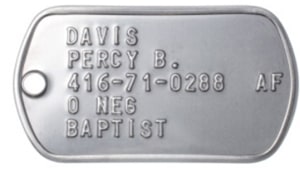
● Last name ● First name & initial of middle name ● Social Security Number (9 digits) OR DoD ID number (10 digits) + “AF” ● Blood group ● Religion |
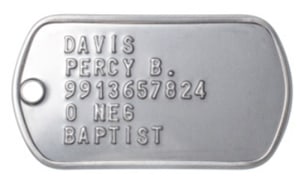
● Last name ● First name & initial of middle name ● DoD ID (no hyphens) ● Blood type + Rh factor (positive or negative) ● Religion |
|
| Marine Corps | 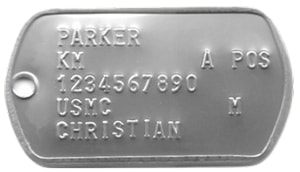
● Last name ● First & middle initials + suffix; blood group ● EDPI number (10 digits) OR Social Security Number (9 digits) ● “USMC” + Gas mask size (S, M, or L) ● Religion OR Allergy (if the tag is red) |
| Navy | 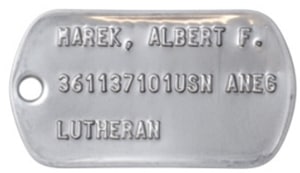
● Last name, first name, and initial of middle name ● Social Security Number (no dashes or spacing) + “USN”, blood group ● Religion |
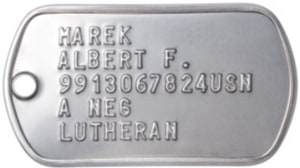
● Last name ● First name and initial of middle name ● DoD number + “USN” ● Blood group ● Religion |
|
| Army | 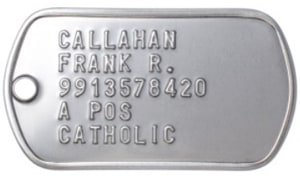
● Last name ● First name & middle name initial ● DoD ID number OR Social Security Number ● Blood group ● Religion |
| Coast Guard |
● Social Security Number (no dashes or spacing) + “USCG” ● Blood group ● Religion |
| Medical Warning Tag (red) | 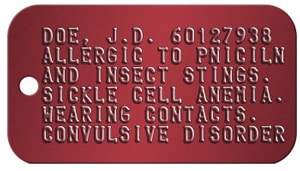
● Last name, first name, middle initial, and DoD ID number ● Allergy ● Medical Condition ● Prescription |
| Special Forces tag (black) | 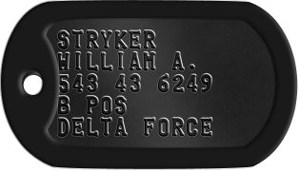
● Last name, first name, and middle name initial ● DoD ID number ● Blood type ● Religion ● Military Unit (Navy Seals/Delta Force/Green Berets/Army Rangers/Commandos) |
Note that while DoD and Social Security Numbers (SSN) are the main types of digits on dog tags, service numbers or serial numbers may also be used, and their structure is a lot more varied than the other two identification methods.
Service numbers can contain prefixes (such as W, A, and F for the Army) and suffixes (namely, A and AF for the Air Force).
They often precede Tetanus immunization information and the blood type of the soldier, so if you see a series of code that differs from the regular DoD and SSN formats, that’s probably the service number, and you should note it down.
2. Look up the veteran’s name or service number in military records.
- If you have the service number (or DoD ID/social security number), go to fold3.com and type any of these codes in the search bar. Bear in mind that not all service records have been digitized for viewing.
Alternatively, the veteran’s name may also be sufficient to find someone’s dog tag numbers and other information like service branch, which will help you recreate the ID.
- Suppose your military serial number search online proves fruitless, or you don’t have any document with a serial number, DoD, or social security number. In this case, make a request for your loved one’s Official Military Personnel File (OMPF).
Go to www.archives.gov/veterans/military-service-records#evetrecs and follow the instructions there, or fill out Standard Form 180 and mail it to the address indicated on page 3 of the form.
The OMPF you receive will help with dog tag ID number lookup and include other information on the tag.
Conclusion
Understanding how to look up military dog tags shouldn’t take much of your time. If online archives fail to produce the desired results, you can always turn to the government and the Veteran Affairs Department for answers.

For an ex-serviceman, it is a pleasure for me to continue my work in The Soldiers Project. This site is built with the target to help people who work in security jobs and other people to gear themselves with high-quality equipment. It is essential for many duties that they have the protection required to perform with safety.

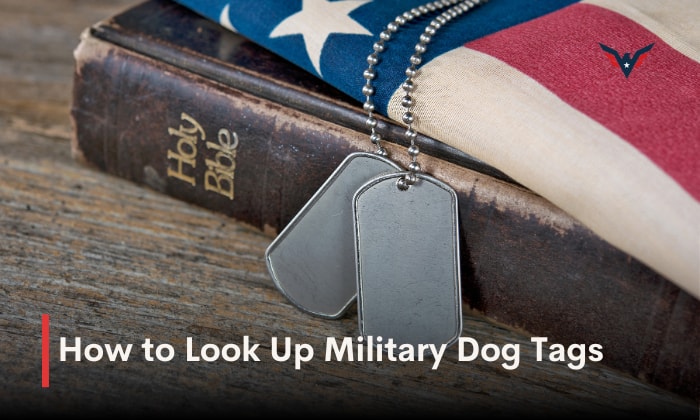
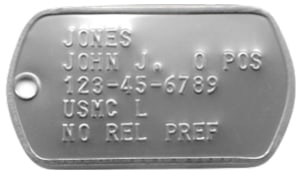
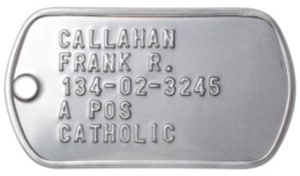
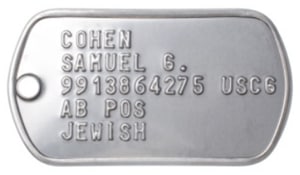 ● Last name, first name, and middle name initial
● Last name, first name, and middle name initial